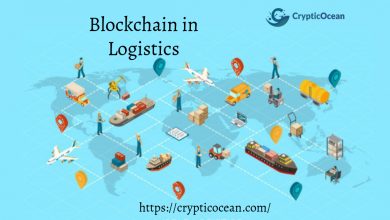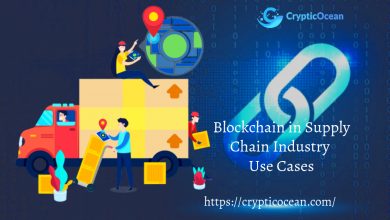Blockchain in Education – A Complete Guide for 2020

Blockchain technology has gained considerable attention from researchers and practitioners.
This is mainly due to its unique features including decentralization, security, reliability, and data integrity.
Despite this growing interest, little is known about the current state of knowledge and practice regarding the use of Blockchain in Education
These case studies are a systematic review of research investigating blockchain-based educational applications.
It focuses on three main themes:
- Educational applications that have been developed with blockchain technology.
- Benefits that blockchain technology could bring to education
- Challenges of adopting blockchain technology in education.
Below are the Various Applications of Blockchain in Education.
Application of Blockchain in Education
There are many applications and benefits of blockchain-based ledger technologies for education:

1. Student records or comparing databases
Certifying an academic record or transcript of a student’s grade needs to be ensured manually.
It is a most time consuming and labour intensive task in education institutions today.
Certification of course contents is another type of student record.
Verifying this means comparing the contents of the courses.
For instance, In K-12 education, it might happen that a student in one state takes a class called ‘Algebra’ and then moves to another state where she is enrolled in a school that also teaches a class called ‘Algebra.’
Comparing the database is tedious work to do. At the university level, it is a nightmare.
At the university where a student went to medical school, complete course contents are around 700 pages.
For each student who requests this record, each page should be signed and stamped to ensure its accuracy.
But if this information were stored on a blockchain, with just a few clicks, a person could obtain a complete, verified record of content courses and all academic achievements.
Blockchain technology could be used to securely encrypt the data collected by institutions.
The information recorded and encrypted would remain valid and official within the chain i.e. certificates, student information, etc, and with the development of adequate tools.
2. New pedagogy
Universities rely on the prestige of their academic models to ensure third parties about the quality of education acquired by the students.
The broadcast model of learning remains common in many Universities, with teachers acting as broadcasters and students as recipients of a one-way message.
Such a model might not be any longer appropriate for the digital age.
With information widely available online, self-paced computer learning programs could carry the mastery of knowledge, while classroom time is allocated for debate, discussion, and collaboration around projects.
New pedagogy models would be based on learning by doing, exchanging orthodox curricula for heterodox learning processes in which students capitalize on what they have learned in topics they are really passionate about, such as the case of Vitalik Buttering, the founder of Ethereum (Tapscott & Tapscott, 2017).
An approximation of this model is the Thiel Fellowship program, which awards “$100,000 to young people who want to build new things instead of sitting in a classroom”.
Consensys is one of the blockchain’s collaborative models.
It lies under the development of the Ethereum code.
The models ensure a holacratic management of science-based on collaboration rather than hierarchical structures.
3. Education costs
Blockchain technology allows for :
- A reliable proof-of-truth mechanism e.g. to confirm if students signed in MOOCs completed the course, took the tests and mastered the material
- payment mechanisms and
- learning plans established under smart contracts (Swan, 2015).
The Blockchain pay for success scheme (Swan, 2015) could enable private companies to support the development of skills they are interested in, by financing individual students to achieve specific learning goals and reward them accordingly, making students accountable for their own progress.
4. Badges
Services like Open badge Passport are taking new direction today.
A badge contains a person’s resume that contains a lot of additional information and they are foreign language skills, technical knowledge, or specific abilities not necessarily related to a person’s profession besides a degree.
A person who has any specialization in any course, for instance, masters in BA.
This specific certification does not verify that a person is also able to speak other languages or it doesn’t reflect that person is a trained chef or a cook.
These skills are not easy to verify. But a person can get an expert third party to verify that skill and grant a certificate or badge.
If these are stored on a blockchain, they prove that a person indeed has the skills in question.
5. Smart Contracts
DLT ( Distributed ledger technology ) can be used to automatically execute agreements once a set of specified conditions are met.
Smart contracts have the potential to reduce paperwork in many sectors including education.
Woolf University, formed by Oxford professors, will use DLT to execute smart contracts.
A series of student and teacher “check-ins” are key to executing a series of smart contracts that validate attendance and assignment completion.
A check-in could be as simple as clicking a button on a phone app but it executes a smart contract that pays the teacher and provides micro-credits to the student.
DLT could facilitate distributed learning schemes.
A state or institution could fund a student’s account using blockchain-based smart contracts and provide all the funding up-front.
The smart contracts would release it when certain criteria are met.

6. Publishing
Undergrad and grad students, teachers, professors, and researchers constantly generate quality material.
But the road to publication is a hard one.
Science has a long history of worthy research that, for a variety of reasons, were rejected by scientific journals:
Enrico Fermi’s 1933 paper on weak interactions, Hans Krebs’ 1937 paper on the Citric Acid Cycle, Rosalyn Yalow’s 1955 research that set the bases for radioimmunoassay and even as recently as 1993 Kary Mullis’ paper on polymerase chain reaction were all rejected for a variety of reasons—and all these papers went on to earn Nobel Prizes for their authors!
Not only does this indicate that rejections don’t mean your paper is bad, but it also shows just how difficult it can be to get published.
But publishing on a blockchain could help new writers, researchers, and many others break into the industry.
Blockchains could also help with rights management and protection against piracy.
7. Competencies and learning outcome management
Blockchain applications are being given great attention towards improving the learning objectives and enhance the attainment of competencies with educational scope.
This will make learning outcomes enhanced and enrich the education system in a wide spectrum.
Student’s performance is based on qualitative and quantitative measures as there is a wide increase in several efficient blockchain applications.
For instance, Farah, Vozniuk, Rodríguez-Triana, and Gillet, built a system to trace the performance of students for their multi-learning activities.
It adds up independently with all traces for each given activity into a block.
Thus, this learning block can be considered as self-describing since it includes all metadata about many activities.
Such an application leads to achieving a high level of self-efficiencies.
Another application by Williams proposed a learning environment for students.
The system provides direct support and meaningful feedback.
It was intended to enhance the learning process by applying a wide set of skills, encourage critical thinking and problem solving with better collaboration and communications.
8. Fees and credits transfer
Blockchain applications are being introduced to pay fees and transferring credential records among educational institutions, organizations, or even universities due to the high security and trust of blockchain.
Usually, educational institutions rely on a third-party/intermediary to handle and approve the transfer of credits or fees.
Fortunately, the blockchain can be used as an efficient manner to exchange information and eliminate the need for such third or intermediary parties based on its high-security level.
To illustrate, the EduCTX system enabled the transfer process using tokens and is a user-friendly dashboard.
These tokens can be in terms of any digital form for learning units such as certificates, courses, and diplomas.
Each educational institution has its own EduCTX address to handle the secured transfer process.
9. Guardianship consent
The decentralized nature of blockchain assists in enhancing the process of collecting consent without compromising its privacy.
This has a great impact to ease the collecting and commutation process among a large number of students, parents, and educational institutions.
Blockchain has helped in enriching the traditional way of gathering parent’s consent to be collected electronically.
This is because of the trust in blockchain technology.
To illustrate, Gilda and Mehrotra proposed a framework to permit public schools to give authorization rights to any third-party institutions who would like to meet their students without obtaining parents’ consent for every single time.
Blockchain helped establish a nested authorization process that speeds up the whole process and, thus, guarantees the privacy and access control of consent.
10. Professional ability
Professional ability is another category that links students’ professionalism with specific industries for the purpose of employment recommendations.
One example of this category was a study by Liu, Guan, Yang, Zhu, Green, and Yin, which applied the blockchain technology to the link between educational institutions and employment enterprises for sharing all necessary information regarding recruitment and industry requirements.
Similarly, another example was illustrated by Zhao, Liu, and Ma, where an application program was developed using blockchain in order to evaluate students’ professional skills based on their academic achievements and performances, which then could be provided to any interested industry.
This evaluation system has been designed to assess and analyze students’ abilities based on the clustering algorithm within the blockchain.
Conclusion
Cryptic Ocean is a blockchain technology company that provides end-to-end blockchain development and blockchain consulting services to multiple business domains.
Our goal is to help companies adopt new technologies and simplify complicated issues that arise during technology evolution.
Contact us for the best solutions about the use of blockchain technology to solve the toughest challenges faced by the world today.
FAQ’s
How Blockchain technology will disrupt higher education?
The most promising use for blockchain in higher education is to transform the record-keeping of degrees, certificates, and diplomas.
Why is Blockchain so important?
Blockchain offers smart learning and constant need to improve the skills.
It ensures recruitment processes to be more efficient and immersive to adapt to different demands.
What are the problems with Blockchain?
Blockchain suffers from the threat of student data and its misuse.
It also relates to the high cost of ensuring consent into the public ledger and blockchain only guarantees a record’s immutability but not its value or quality.
If you found this article interesting, here you can find more Articles.




